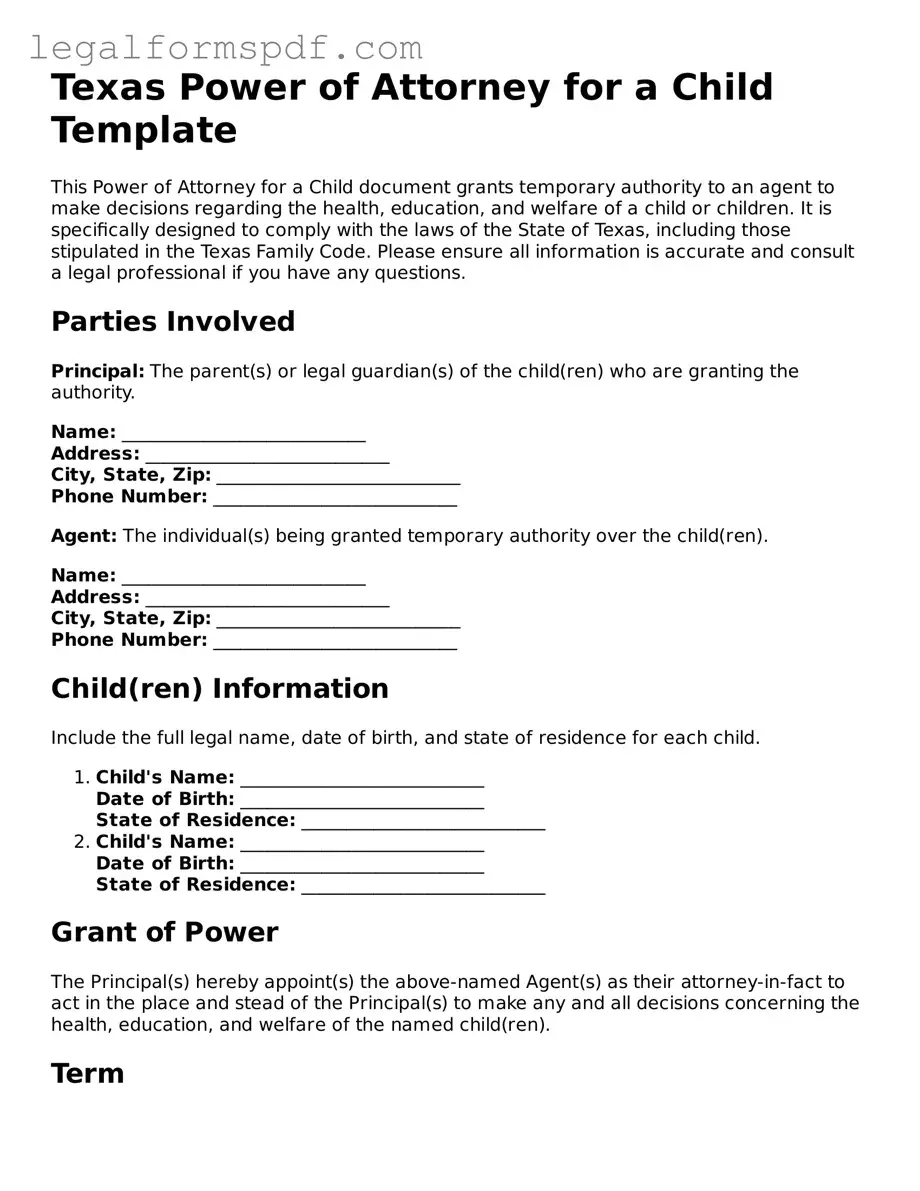Texas Power of Attorney for a Child Template
This Power of Attorney for a Child document grants temporary authority to an agent to make decisions regarding the health, education, and welfare of a child or children. It is specifically designed to comply with the laws of the State of Texas, including those stipulated in the Texas Family Code. Please ensure all information is accurate and consult a legal professional if you have any questions.
Parties Involved
Principal: The parent(s) or legal guardian(s) of the child(ren) who are granting the authority.
Name: ___________________________
Address: ___________________________
City, State, Zip: ___________________________
Phone Number: ___________________________
Agent: The individual(s) being granted temporary authority over the child(ren).
Name: ___________________________
Address: ___________________________
City, State, Zip: ___________________________
Phone Number: ___________________________
Child(ren) Information
Include the full legal name, date of birth, and state of residence for each child.
-
Child's Name: ___________________________
Date of Birth: ___________________________
State of Residence: ___________________________
-
Child's Name: ___________________________
Date of Birth: ___________________________
State of Residence: ___________________________
Grant of Power
The Principal(s) hereby appoint(s) the above-named Agent(s) as their attorney-in-fact to act in the place and stead of the Principal(s) to make any and all decisions concerning the health, education, and welfare of the named child(ren).
Term
This Power of Attorney shall commence on _____________ and shall remain in effect until _____________ or upon the occurrence of an event that terminates the document according to Texas law.
Signature
This document must be signed by the Principal(s) in the presence of a Notary Public or two witnesses who are not related to the Principal(s) or the Agent(s).
Principal's Signature: ___________________________
Date: ___________________________
Agent's Signature: ___________________________
Date: ___________________________
Notarization (if applicable)
This section is for the Notary Public to complete, acknowledging the signing of this document by the Principal(s) and conforming with the legal requirements of the State of Texas.
STATE OF TEXAS
COUNTY OF ___________________________
Subscribed and sworn before me on this ___ day of ____________, 20__, by ___________________________ (name(s) of principal(s)).
Notary's Signature: ___________________________
Commission Expires: ___________________________
